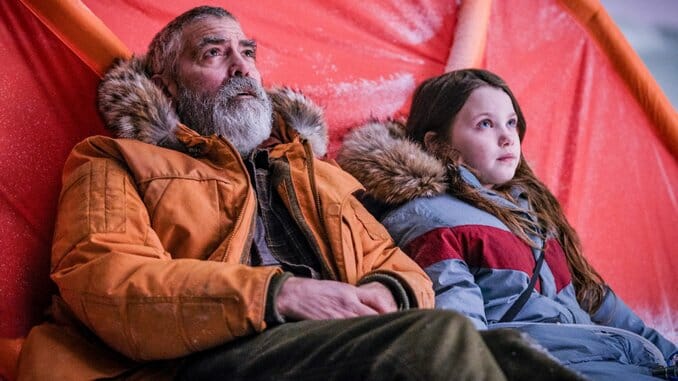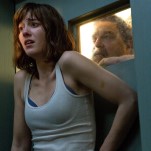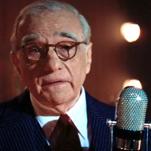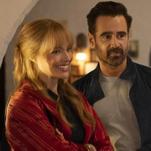George Clooney’s The Midnight Sky Provides a Quiet, Meditative Take on the Sci-Fi Genre
Photos Courtesy of Netflix
When you see that a film stars George Clooney, you usually know that the actor is going to deliver a good performance. When you see a film directed by him, expectations are shakier. With successes such as Good Night, and Good Luck alongside less popular films such as Suburbicon, Clooney’s directorial career hasn’t been spotless, leaving some wariness surrounding The Midnight Sky, his first time directing sci-fi. Despite treading familiar ground within the genre, a fresh perspective and powerful cast (beyond just Clooney) prove these fears to be unwarranted.
Set in 2049, The Midnight Sky is a meditative journey which sees our planet as a rapidly decaying wasteland and the expanse of space as a dangerous, yet hopeful, new frontier. Cutting between the Arctic and an elaborate spaceship called the Aether, the film follows dying scientist Augustine Lofthouse (George Clooney) as he races to warn those upon the Aether to abandon their return to Earth, after an alluded cataclysmic event renders most of the world uninhabitable. Although it has its share of cliches, it remains a gripping, chilling story throughout—one that strikes a little too close to home in the context of 2020.
The majority of The Midnight Sky’s first half focuses on Augustine, who is dying to cancer and is the last person remaining in the Arctic after an evacuation other than a young, untalkative girl named Iris (Caoilinn Springall), who somehow got left behind. The two quickly form a bond, and although Springall’s performance is a mostly passive one, it serves to provide exposition and a foil to Clooney’s character. The seasoned actor uses his age well, portraying a deeply regretful and broken man who grasps at the chance to do anything to make up for his past mistakes.
Meanwhile, back at the giant rotating spaceship, Commander Adewole (David Oyelowo) leads the ship back to Earth after discovering that Jupiter’s planet, K-23, exceeded their hopes for sustaining life, although none was found during their visit. Along with a cheery crew ignorant of the apocalypse taking place on Earth in the two years since departure, I quickly fell in love not just with the entire Aether’s crew, but with the spaceship itself. There isn’t any stunning CGI work, but that doesn’t take away from the ship’s fascinating design—supplied with air by two titanic tanks of greenery and simulating gravity through a spinning mechanism—that combines modern structures such as the International Space Station with a Star Trek-esque flair, creating something that seems at least inspired by reality if not rooted in it. Although the special effects aren’t anything spectacular (the few scenes on K-23 make the use of green screens especially obvious), they’re aided by a reliance on imaginative sets and a fully immersed cast, while many of Clooney’s scenes were actually filmed in extreme weather.
-

-

-

-

-

-

-

-

-

-

-

-

-

-

-

-

-

-

-

-

-

-

-

-

-

-

-

-

-

-

-

-

-

-

-

-

-

-

-

-








































